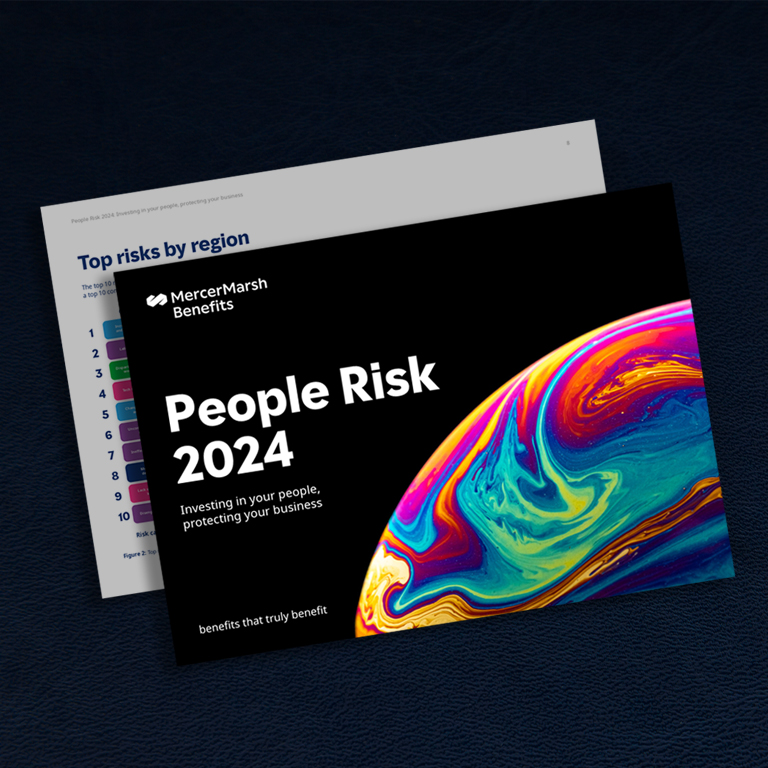
Matt Zafra
Asia Advisory Leader, Mercer Marsh Benefits
-
Singapore
Employers aiming to support their entire workforce have a chance to enhance employee value and engagement by aligning benefits with both universal needs — such as health screenings — and more personalized requirements that consider individual circumstances and realities. Unfortunately, many conventional benefit plans are designed around the concept of the ‘average employee’ and are centered around traditional life events.
According to our research, only 52% of foreign-born employees believe their employer cares about their health and well-being, compared to 62% of all respondents globally. Just under two-thirds (64%) of LGBTQ+ employees report being physically and mentally well, lower than the 73% of heterosexual employees. Women report poorer overall physical and mental well-being, with 71% stating they are well compared to 77% of men. Men report more physically demanding jobs. Single mothers are not confident they can afford healthcare.
Lower-income workers merit special mention; a third (33%) of employees with below-median incomes expressed concern about affording care, versus 15% of those with above-median incomes.
Flip the pyramid to provide benefits to meet the needs of the full workforce
Traditional benefit design tends to support those at the top of the pyramid. ‘Flip the pyramid’ by opening up eligibility and adding new inclusive employee benefits, enabling you to support all employees. Our Health on Demand 2025 report provides examples of how you can extend some health supports to the portion of the workforce that is not eligible for employer-sponsored medical insurance.
In the context of employee benefits, addressing both women's and men's health is crucial, as each group faces unique health challenges and concerns. Our Health on Demand 2025 research found that women often report poorer overall physical and mental well-being and face financial insecurities due to caregiving responsibilities, whereas men are more likely to experience issues related to mental health, substance abuse, and workplace safety. By recognizing and catering to these distinct needs, employers can create a more inclusive and supportive benefits plan that enhances the overall well-being of their workforce.
Another way to better meet employee needs is to introduce choice into the benefits on offer. Although there are some benefits that most people want, there are others that a small portion of employees really value. Offering a broad range of support makes it more likely you will meet the needs of everyone. The data around the value of personalization of benefits is compelling, with employees who can personalize their benefits package far more likely to feel that their employer cares about them, their benefits meet their needs, and that benefits are better than those offered by others.
How to read this chart: 78% of employees who can personalize their benefits package say their employer cares about their wellbeing. 29% of employees who can’t personalize their benefits say their employer cares about their wellbeing.
Source: Mercer Marsh Benefits, Health on Demand 2025
Flexible benefits, which allow employees to tailor benefits to their individual needs, can make employees feel more valued and supported.
Employees are unlikely to take advantage of benefit programs if they don’t know about or understand their programs, making communication and education with plan members vital. Our research highlights the importance of utilizing various ways to communicate, since different groups might have distinctive preferences. For example, 73% of Gen Zs would be happy if their employer provided a communication program for colleagues to share their personal stories to promote well-being (vs. 63% of Boomers).
Explore how organizations that show they care for their employees are rewarded by a resilient and thriving workforce. In MMB’s Health on Demand 2025 global report we look at the relevance and value of benefits and how being a caring organization inspires workers to thrive.

Asia Advisory Leader, Mercer Marsh Benefits
Singapore

Benefits Consulting Analyst, LAC, Mercer Marsh Benefits
Panama

Report
04/23/2024